Today’s CometWatch features not one, but four single-frame NAVCAM images taken between 25 and 27 February at distances around 80 to 100 km from the centre of Comet 67P/Churyumov-Gerasimenko. More details on the distance, size, and resolution for the individual images are provided in the captions below.
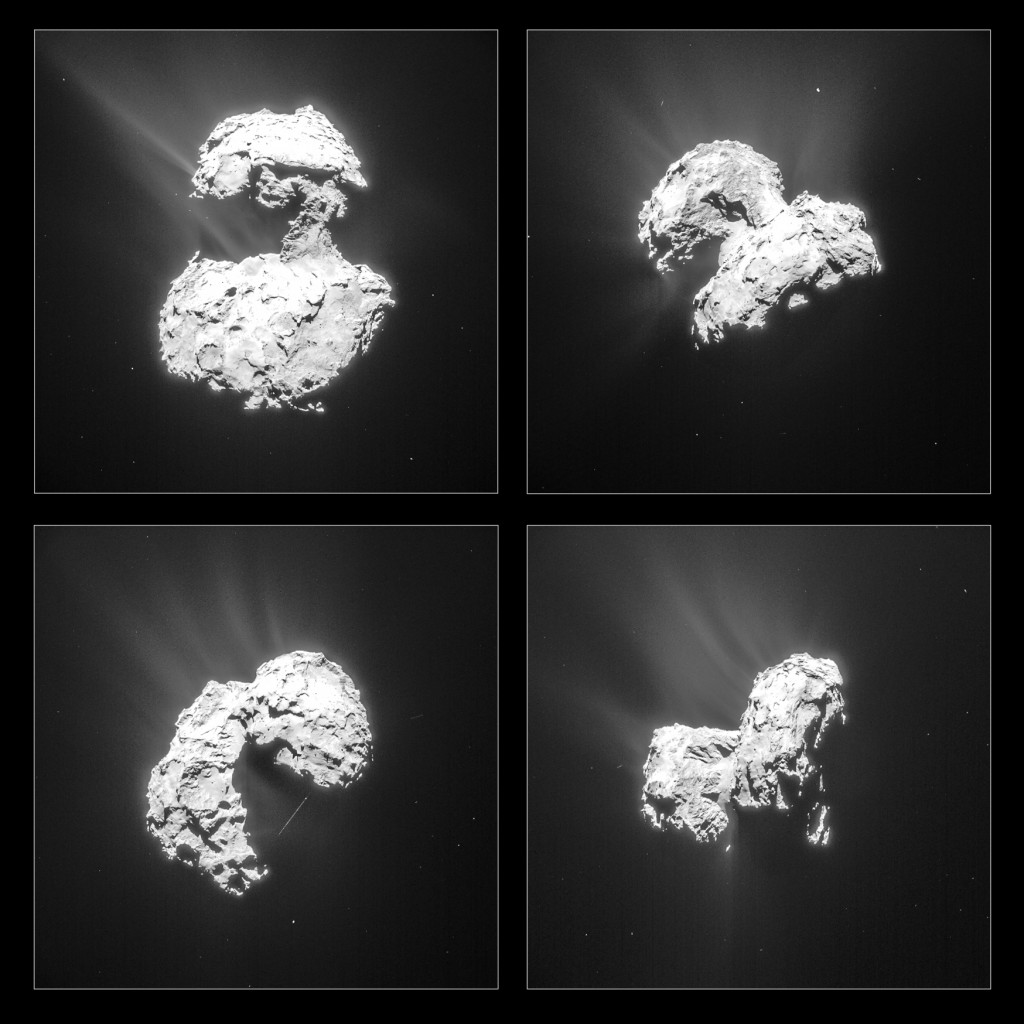
Montage of four single-frame images of Comet 67P/C-G taken by Rosetta’s Navigation Camera (NAVCAM) at the end of February 2015. The images were taken on 25 February (top left), 26 February (top right) and on two occasions on 27 February (bottom left and right). The images have been processed to bring out the details of the comet’s activity. The exposure time for each image is 2 seconds Credits: ESA/Rosetta/NAVCAM – CC BY-SA IGO 3.0
While most of Rosetta’s NAVCAM images are taken for navigation purposes, these images were obtained to provide context in support of observations performed at the same time with the Alice ultraviolet (UV) imaging spectrograph on Rosetta.
Alice makes its observations through a narrow, long slit (you can read about Alice’s first far-UV spectra and find an animation showing the size and shape of its field of view in an earlier blog post), and scientists use NAVCAM images taken at the same time as the spectra to identify where the slit was located on the comet, including which parts were pointing to an illuminated portion of nucleus, which to a region in shadow, or off the nucleus altogether. Earlier in the mission, these NAVCAM context images were taken as strips centred on the position of the Alice slit, but lately full-frame NAVCAM images have been taken in support of the Alice observations instead.
The exposure time used for the four images in today’s CometWatch post was roughly 2 seconds. Also, the phase angle was very small at the time, meaning that the Sun was illuminating the comet from behind Rosetta. This geometrical configuration combined with the relatively long exposure time has caused some parts of the nucleus to be slightly over-exposed.
The over-exposure is not a concern for Alice, as the scientists only need these images to locate the position of the slit with respect to the comet’s nucleus. However, as the images are partly saturated, we decided to process them in a way that focuses on activity in the coma rather than on the details of the nucleus.
The four images show the nucleus at different orientations, providing a good overview of the comet’s activity over the time interval between 25 and 27 February 2015.
Below we give a brief description of some of the regions visible in these four images, to help you find your way around the comet in the various orientations. You can also find regional maps of 67P/C-G here and here.
In the 25 February image, the nucleus is oriented with the small comet lobe up and the large one below. On the comet’s neck, the Anuket region is visible, while Hathor (to its left) is in shadow. Parts of the smooth Hapi region can also be seen at the bottom of the neck.
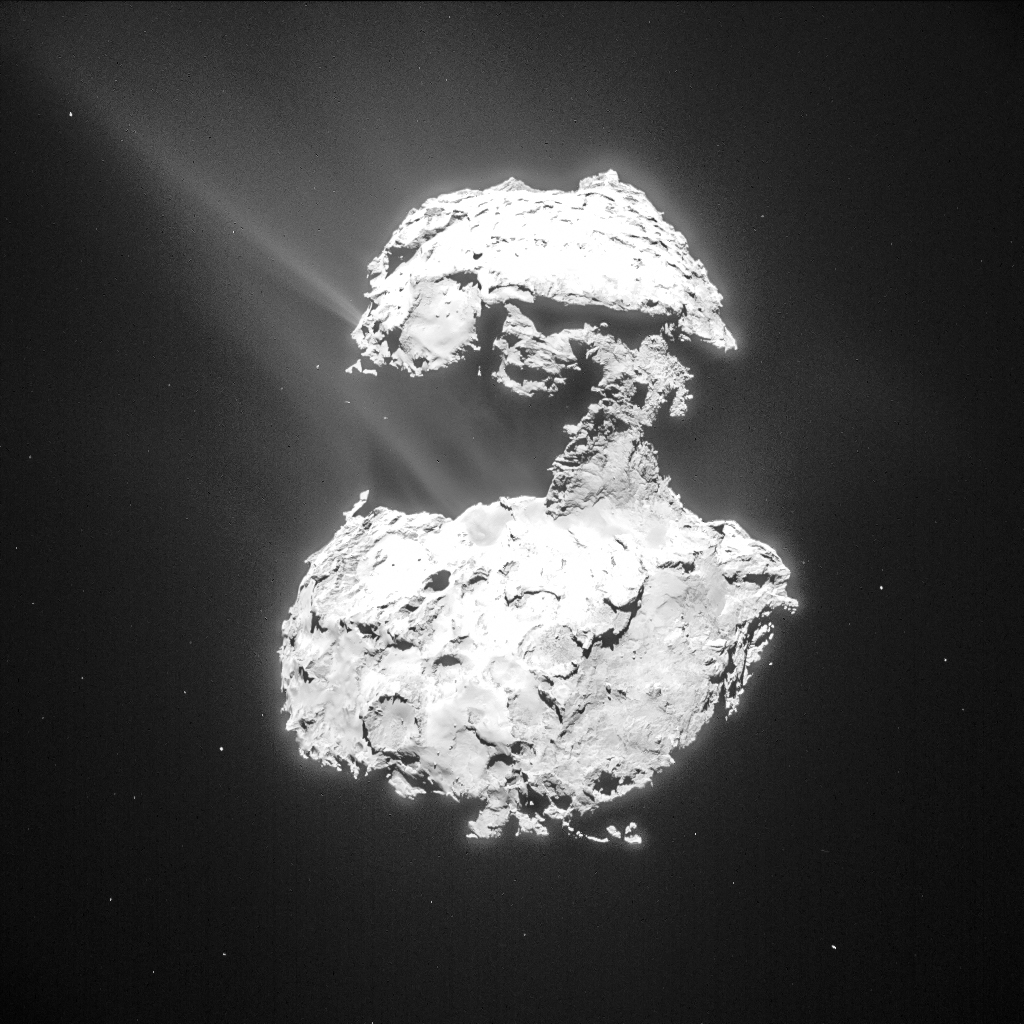
NAVCAM image of Comet 67P/C-G taken on 25 February from a distance of 81.9 km to the comet centre. The image has a resolution of 7.0 m/pixel and measures 7.1 km across. The image has been processed to bring out the details of the comet’s activity. Credits: ESA/Rosetta/NAVCAM – CC BY-SA IGO 3.0
In the 26 February image, the nucleus is oriented diagonally, with the small comet lobe to the upper left and the large lobe to the lower right. The view is dominated by the regions on the comet’s neck, namely Hathor, Anuket, and Hapi.
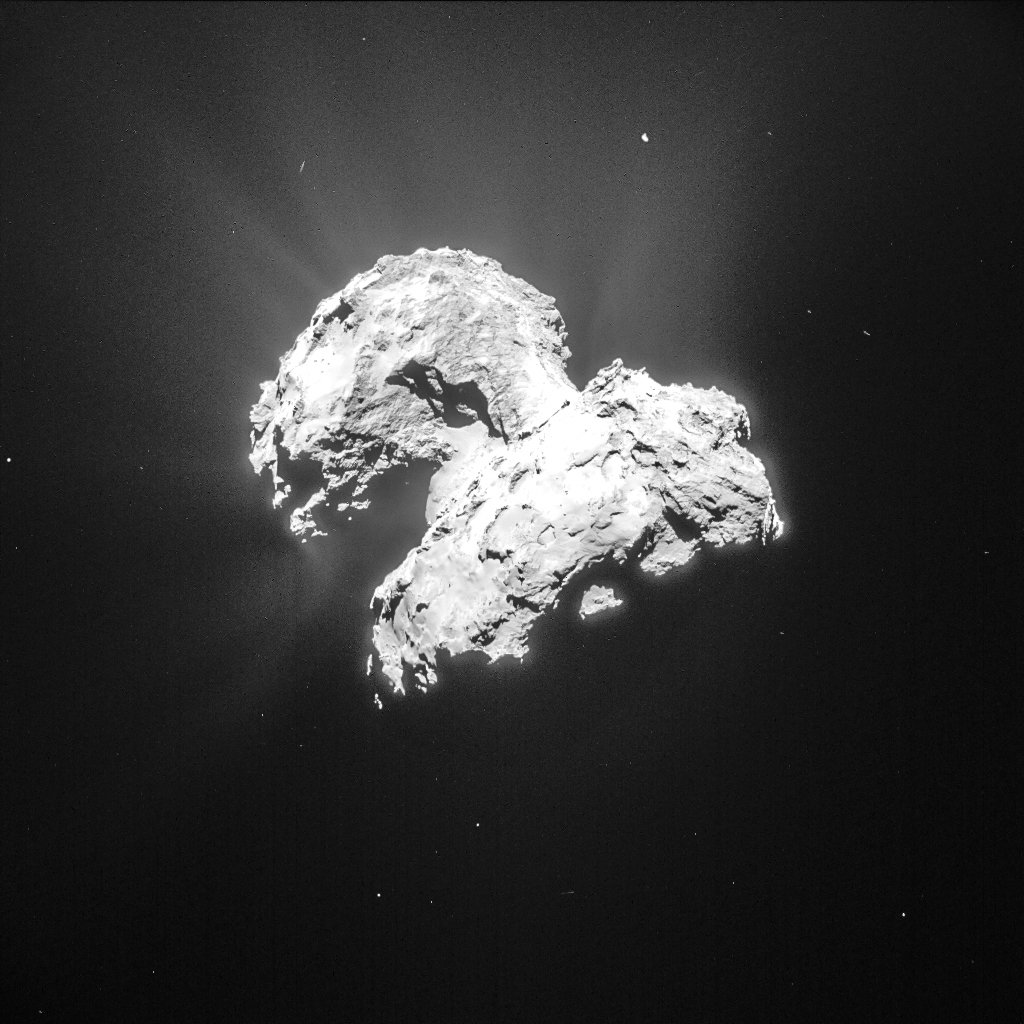
NAVCAM image of Comet 67P/C-G taken on 26 February from a distance of 87.1 km to the comet centre. The image has a resolution of 7.4 m/pixel and measures 7.6 km across. The image has been processed to bring out the details of the comet’s activity. Credits: ESA/Rosetta/NAVCAM – CC BY-SA IGO 3.0
The first 27 February image shows the small lobe in the foreground, offering a great view on the Hatmehit depression. A very long streak, possibly created by a particle in the foreground, is also visible in the shadow cast by the small lobe.
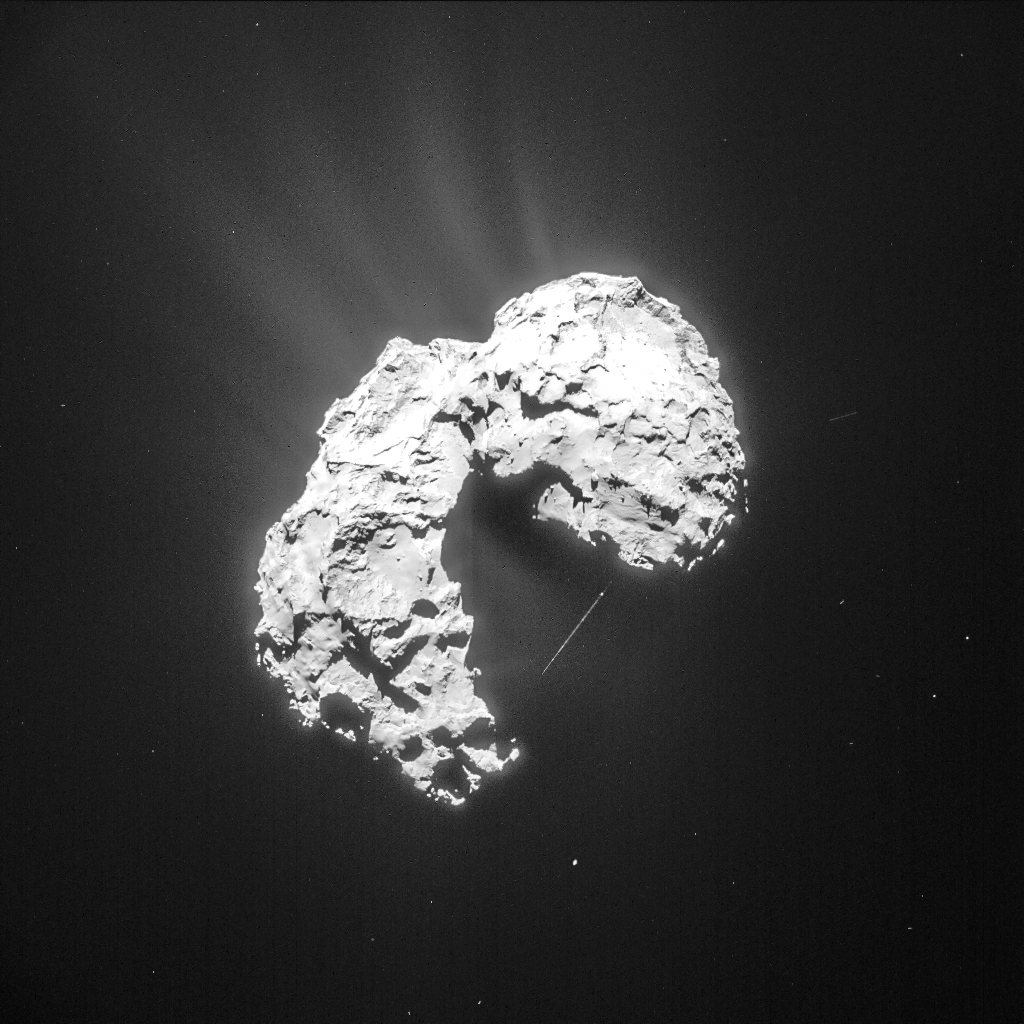
NAVCAM image of Comet 67P/C-G taken on 27 February from a distance of 98.2 km to the comet centre. The image has a resolution of 8.4 m/pixel and measures 8.6 km across. The image has been processed to bring out the details of the comet’s activity. Credits: ESA/Rosetta/NAVCAM – CC BY-SA IGO 3.0
The second 27 February image shows the comet with the large lobe to the right and the small one to the left. The image also provides a nice view on the cliffs of Hathor and the smooth Hapi region on the comet’s neck.
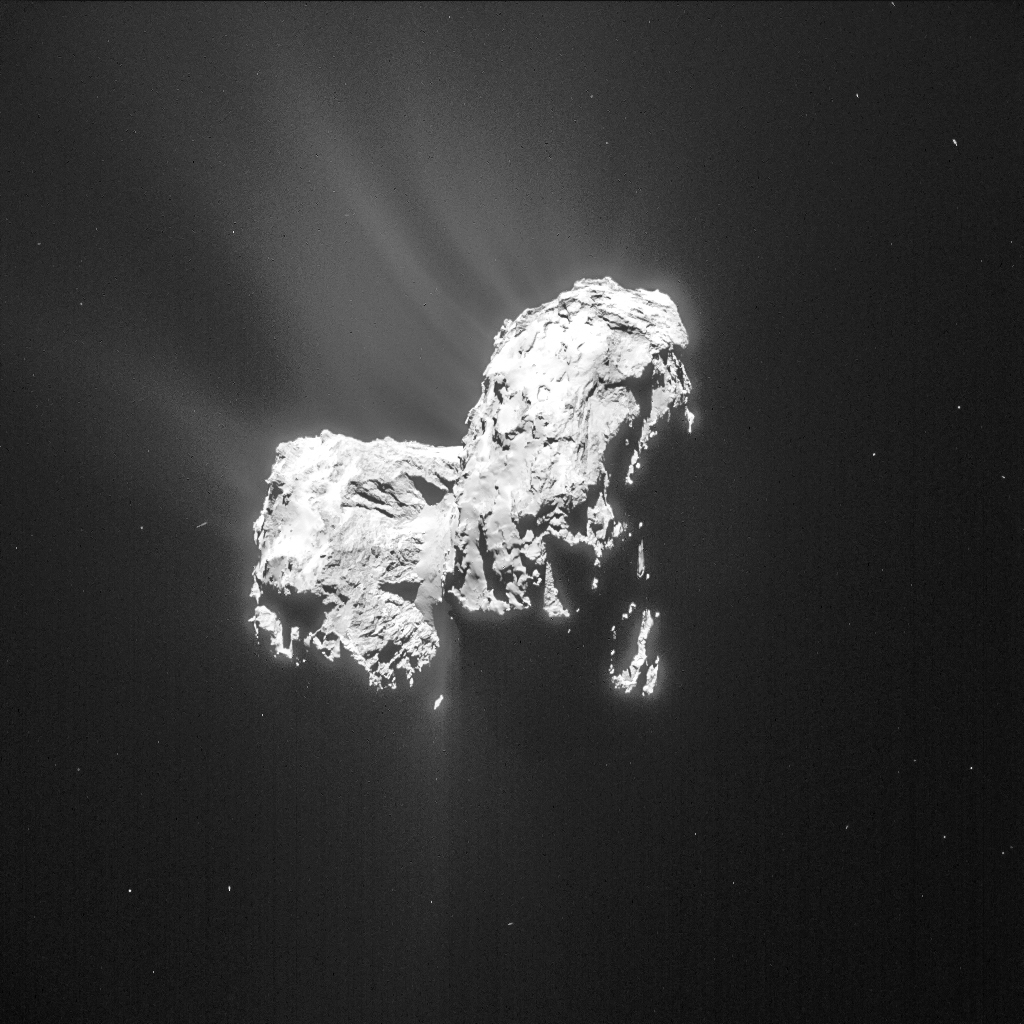
NAVCAM image of Comet 67P/C-G taken on 27 February from a distance of 101.7 km to the comet centre. The image has a resolution of 8.7 m/pixel and measures 8.9 km across. The image has been processed to bring out the details of the comet’s activity. Credits: ESA/Rosetta/NAVCAM – CC BY-SA IGO 3.0
The orientation of the last image is very similar to that of the four-image mosaic published earlier this week as CometWatch 26 February, albeit with small differences, as Imhotep (on the underside of the large lobe) is now almost completely cast in shadow. Comparing these two images reveals a very similar level of activity in the upper part of the frame, suggesting that there are no rapid changes in the outflow structure.
The four original images are provided below (click on the individual images for full resolution):

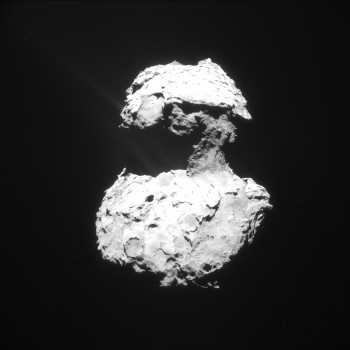


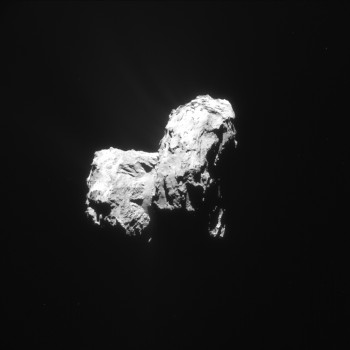
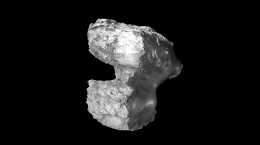
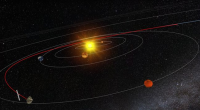
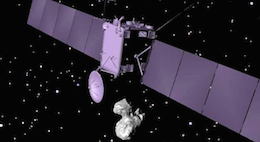

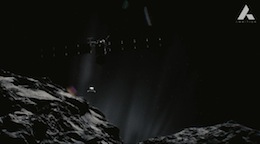
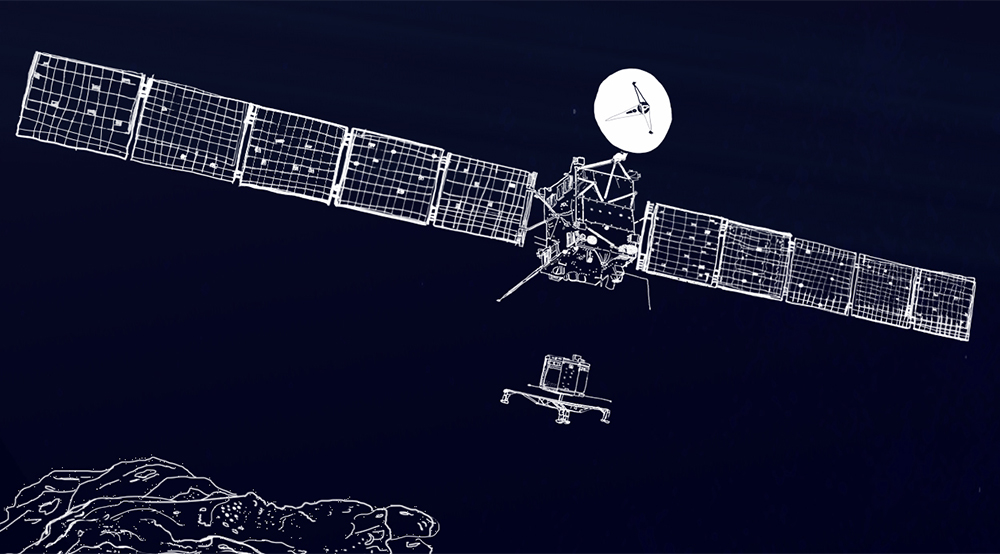
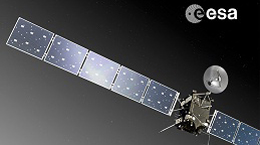
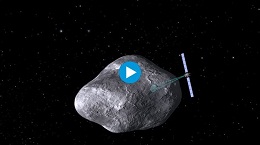
Discussion: 23 comments
with the mounting comet`s activity during the coming months could the increasing outflowing material block philaes´s spot or even prevent coming to life of the Lander?
Impacting solar wind from the upper left corner, right?
I believe the 27 Feb. image does show a particle streak. Notice along the line, there are at least four dots. Areas where the particle rotated and reflected more sunlight. Much the same way as an Earth orbiting satellite reflects more sunlight as it rotates. How fast could particles be moving as they come off the comet?
MIRO data suggests circa 700metres per second (approx 2500KmH) which is supersonic on Earth!
Gets some getting used to but papers have been written suggesting a mechanism for the jets which predicts these speeds.
MIRO data is for the water vapour molecules. The dust is likely to be slower, maybe a lot slower.
Around sonic is reasonable for the water vapour if there is a shock wave at the exit point.
Exposure time: 2 seconds, distance between lobes (traveled distance?): approximately 500-1000 meters. The minimum speed is then 250 m/s. That is a lot! different interpretation: the particle streak is in fact close to Rosetta and just happens to be superimposed with the gap between lobes. It would then have to be quite far from the nucleus in order to reduce estimated speed: midway between G-C and Rosetta would still result in a minimum speed of around 125 m/s.
Agree Jacob. The streak is near constant width. It the projectile where nearer to NAVCAM then the attack angle would cause an increasing width.
Being gravitational speed so low that object can’t be coming back or orbiting. So it’s a big and speedy object. Any programming code about to particle evasion?
Anyone bold enough to suggest that the long streak on the 27./2. image could be some ionizing ray /discharge between lobes? I does seem tempting. I just do not know what forces / mechanisms could be involved? It is suggested it is a near field object, and really if no one objects, that is what it stays 😉
The streak is odd. Remember that if it is sub-pixel, it won’t change its size with distance. Since resolution at the comet was 8.4m/pixel, a particle could be far closer & remain sub-pixel. This however begs the question of what it is, why it appears/dissappears, especially if it is much closer to Rosetta & slower. The straightness of the track perhaps suggests a larger particle with more momentum than the dust if it is close in.
Before expending too much effort on it, I’d want the camera team to confirm its not some kind of artifact.
If its a one-off, perhaps of limited importance really, but intriguing nonetheless,
I don’t see how you deduce a minimum speed.
The object is a single pixel, assuming it’s real and not an artifact. We don’t have any way to know what distance it is at. A small object could be very close to Rosetta and remain single pixel.
Someone needs to model the illumination conditions and see if they could explain the way it ‘appears-disappears’ if it was a near Rosetta particle.
If it is close in to 67P, and that fast and bright, quite hard to explain. The brightness and straight track suggest a heavy particle, but it’s hard for very low density gas to accelerate a big object to such high speeds; an ‘explosive’ event might – but you’d expect other debris.
Faut de mieux, I think I’d bet on a chance close to Rosetta object, if I had to bet, but it’s unclear.
Disciplined mind Harvey. Both Jacob’s and my argument are missing enough data as to postulate anything. Statistics says it’s a lot more probable to be a little particle near NAVCAM in a cruise trajectory than our argument. Nowadays, wanting to caution the plausibility [and risk].
On zoom examination the streak has an average of 3 pixels with a minimum of 2 and a max of 6. On using memory remember ‘screw’ streaks suggesting snow. Extreme variance in luminosity and straight line suggest ice.
@Harvey, minimum speeds are only related to the proposed assumptions. Certainly no real minimum speed can be determined
I can see dust streaming away in streaks…. But I can also see what looks to be a suspended “cohesive layer” of dust raised above the surface … Can you see that dusty layer outlining areas of the nucleus’s edge?
In the Hi Res picture, you can still see the “outline” within the streaks!
The “layer” is like a terrain following “bubble” of dust…. ?
I like the “shooting star” between body and head
Have been reading abour coriolas effect on earths ocean/atmosphere. Anyone note if the jets display this effect?
See comments below re the Rossby number; sorry would have been better posted here, missed it.
Thank you for these beautiful images Claudia. For today I’m not worried about mechanisms, processes, numbers and such, just enjoying what I think we were all hoping to see from this mission, 67P gradually coming alive to create these spectacular images. The NAVCAM team have done us proud again.
Ducky’s body is not that much overexposed. After all, those jets are a lot stronger than a few months ago:
https://www.esa.int/spaceinimages/Images/2014/10/Comet_activity_10_September_2014
With help from particle-o-sphere scatter illumination, this photo mosaic brings a ‘tactile’ feeling of 67P for the first time, after months of fighting with extreme contrast.
……
The biggest ‘chunks’ compositing this astronomical object seem to be simply ‘glued’ together.
An alternative scenario: If it was part of a bigger comet, Then better yet, it’s been part of several ones, at different moments of her life.
Proposing turbulences are enough to ‘attach’ little icy objects.
Thank`s for these great pictures!It`s exciting to see the comet come to life.Fantastic mission,and this blog is a pleasure.Awesome:)))
One or two people have mentioned Coriolis effects as a possible issue. Interesting question.
The importance of these is determined by something called the Rossby number. High Rossby, >>1, Coriolis doesn’t matter, low Rossby, <<1, and it does.
Taking a scale length of 1km, and the comet's rotation rate, I make the Rossby number around 6V where V is the speed of an ejected dust particle in m/sec.
But somebody please check my calculation!
This would imply that only very slow particles indeed are much affected by the Coriolis effect.
The main reason that they matter in the earth's atmosphere are the much bigger, 1000km scale lengths (this enters on the bottom line of the Rossby number and so reduces it making Coriolis effects more importance.) The eath's rotation is roughly half that of the comet, so same league for that. In a rotating water jet on the other hand, scale lengths are much shorter BUT rotational speeds far higher.
But as far as I can see (someone please check, late night settee calculation 🙂 ) Coriolis effects are probably negligible, except for very slow particles, well sub m/sec.
Re try, Capta issue!
It may be helpful to add:
For scale lengths of 10km, the Rossby number is ~0.6V with V in m/s.
So the ‘dividing line’ is 1.5m/s, below that Coriolis is strong.
So for fairly ‘stood back’ images with a 10km frame, or jets roughly twice the size of the comet itself, particles below 1.5m/s are dominated by Coriolis effects.
So generally one could say that ‘close ups’ will only show it for very slow particles.
‘Stood back’ pictures of the large jets, it’s still only significant for pretty slow dust, m/sec ish.
For fast, near sonic speed, neutral gas etc, only on a much bigger scale than we see in Rosetta pictures.